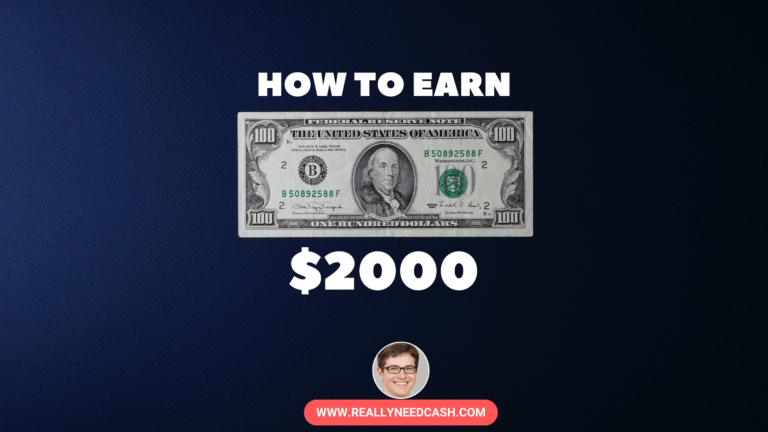Certificates of deposits earn the highest amount of interest among other types of savings accounts. To invest for the long term, CD is a viable option. Alternatively, high-yield savings and money-market accounts offer reasonable to high-interest rates with no condition of locking the funds.
But CD’s accounts require you to lock in your funds for a fixed period. You need to be aware of that.
High-yield savings accounts, money market accounts, and CDs – all have their pros and cons! You should consider factors like liquidity, opening deposit, and maintenance fee before signing up for a savings account.

5 Types of Savings Accounts That Will Earn You the Most Money
Here are the best-performing Savings Accounts that will perform better than the rest:
1. Certificates of Deposit (CDs)
- Interest Rates: CD rates vary depending on the term. For example:
- 1-year CD: 2.5% APY
- 3-year CD: 3.5% APY
- 5-year CD: 4.5% APY
- Terms: CD terms range from 3 months to 5 years.
- Minimum Deposit: Typically, $1,000 to open a CD, but some banks offer no minimum CDs.
- Access to Funds: Limited during the term, with early withdrawal penalties.
- Pros: Highest interest rates; fixed rate for the term.
- Cons: Limited access to funds; penalties for early withdrawal.
2. High-Yield Savings Accounts
- Interest Rates: High-yield savings accounts can offer rates ranging from 4% to 5% APY.
- Terms: No fixed term; interest rates can fluctuate.
- Minimum Deposit: Some accounts have no minimum balance requirements.
- Access to Funds: Typically, no monthly transaction limits; limited ATM access or check-writing privileges.
- Pros: Competitive interest rates; easy access to funds.
- Cons: Some limitations on withdrawals, ATM access, or check-writing.
3. Money Market Accounts
- Interest Rates: Money market accounts provide competitive rates, similar to regular savings accounts.
- Terms: No fixed term; interest rates can vary.
- Minimum Deposit: Varies, with some offering no minimum deposit requirements.
- Access to Funds: Monthly withdrawal limits may apply; some accounts offer debit cards.
- Pros: Competitive interest rates; some liquidity features.
- Cons: Monthly withdrawal limits; potential fees or high balance requirements.
4. Regular Savings Accounts
- Interest Rates: Traditional banks offer rates as low as 0.01% APY.
- Terms: No fixed term; interest rates can fluctuate.
- Minimum Deposit: Varies, but some accounts may have no minimum balance requirements.
- Access to Funds: Generally, no transaction limits; ATM access may be available.
- Pros: Quick access to funds; federally insured.
- Cons: Low-interest rates; potential monthly fees.
5. Cash Management Accounts (CMAs)
- Interest Rates: Comparable to or slightly lower than regular savings accounts.
- Terms: No minimum balance requirement.
- Minimum Deposit: None.
- Access to Funds: Depositing and withdrawing cash may have limitations, but electronic transfers are usually easy.
- Pros: Combines checking and savings features; easy electronic transfers.
- Cons: Not traditional bank accounts; offered by nonbank financial service providers.
If you want to know the worst-performing savings account, refer here for the list.
Best Performing Savings Account Banks for 2023
| Savings Accounts | APY (Annual Percentage Yield) | Minimum Opening Deposit | Minimum Ongoing Balance | Monthly Fee | ATM Card | Mobile Check Deposit | Checking Accounts | CDs Available |
|---|---|---|---|---|---|---|---|---|
| Popular Direct | 5.40% | $100 | Any amount | None | No | Yes | No | Yes |
| My Banking Direct | 5.35% | $500 | Any amount | None | No | Yes | Yes | Yes |
| BrioDirect | 5.35% | $5,000 | $25 (to earn APY) | None | No | Yes | No | Yes |
| Ivy Bank | 5.30% | $2,500 | $2,500 (to earn APY) | None | No | Yes | No | Yes |
| Vio Bank | 5.28% | $100 | Any amount | None | No | Yes | No | Yes |
| TAB Bank | 5.27% | $0 | Any amount | None | No | Yes | Yes | Yes |
| TotalDirectBank | 5.26% | $25,000 | $2,500 (to earn APY) | None | No | Yes | No | Yes |
| Milli* | 5.25% | $0 | Any amount | None | Yes | No | No | No |
| Newtek Bank | 5.25% | $0 | Any amount | None | No | No | No | Yes |
| UFB Direct | 5.25% | $0 | Any amount | None | Yes | Yes | No | No |
| Valley Direct | 5.25% | $1 | Any amount | None | No | Yes | No | No |
| Evergreen Bank Group | 5.25% | $100 | Any amount | None | Yes | Yes | Yes | Yes |
| CFG Bank | 5.25% | $1,000 | $1,000 (to earn APY) | None | No | Yes | Yes | Yes |
| EverBank (formerly TIAA Bank) | 5.15% | $0 | Any amount | None | Yes | Yes | Yes | Yes |
| FNBO Direct | 5.15% | $1 | Any amount | None | Yes | Yes | Yes | No |
| RBMAX | 5.15% | $10 | Any amount | None (with e-statements) or $4 | Yes | Yes | Yes | No |
| Bread Savings | 5.15% | $100 | Any amount | None | No | Yes | No | Yes |
| Western State Bank | 5.15% | $5,000 | Any amount | None | No | No | No | No |
Calculate Savings Account Profit (10Yr – 5.40% APY for $10000)
I did some math on the side and calculated a savings account with an APY (Annual Percentage Yield) of 5.40% for $10,000 over a period of 10 years:
Initial Investment:
- Starting Balance: $10,000
1-Year Projection:
- Interest Earned in Year 1: $540 (5.40% of $10,000)
- Year-End Balance after 1 Year: $10,540 (Initial balance + Interest earned)
2-Year Projection:
- Interest Earned in Year 2: $568.56 (5.40% of $10,540)
- Year-End Balance after 2 Years: $11,108.56
3-Year Projection:
- Interest Earned in Year 3: $600.33 (5.40% of $11,108.56)
- Year-End Balance after 3 Years: $11,708.89
4-Year Projection:
- Interest Earned in Year 4: $635.14 (5.40% of $11,708.89)
- Year-End Balance after 4 Years: $12,344.03
5-Year Projection:
- Interest Earned in Year 5: $672.23 (5.40% of $12,344.03)
- Year-End Balance after 5 Years: $13,016.26
6-Year Projection:
- Interest Earned in Year 6: $711.68 (5.40% of $13,016.26)
- Year-End Balance after 6 Years: $13,727.94
7-Year Projection:
- Interest Earned in Year 7: $753.65 (5.40% of $13,727.94)
- Year-End Balance after 7 Years: $14,481.59
8-Year Projection:
- Interest Earned in Year 8: $798.36 (5.40% of $14,481.59)
- Year-End Balance after 8 Years: $15,279.95
9-Year Projection:
- Interest Earned in Year 9: $845.98 (5.40% of $15,279.95)
- Year-End Balance after 9 Years: $16,125.93
10-Year Projection:
- Interest Earned in Year 10: $896.67 (5.40% of $16,125.93)
- Year-End Balance after 10 Years: $17,022.60
For this example, I am assuming that the interest is compounded annually and that the APY remains constant.
Keep in mind that actual interest rates and returns may vary, so it’s essential to check with your bank for the most accurate information on your specific savings account.
What is a Savings account?
Before I further go into the comparison of some high-paying savings accounts, it’s important to understand what savings accounts can do for you.
Savings accounts are excellent for storing your emergency funds or keeping aside money for financial goals. If you end up with a right savings account, it’s possible to make money while you sleep.
But traditional savings accounts offered by brick-and-mortar banks don’t give promising returns and charge high maintenance fees.
So, what options are left if you want to make your money work hard for you?
CDs, money market accounts, and high-yield savings accounts–all three options are reasonable and offer competitive interest rates.
| Item | Money market accounts | High-yield savings accounts | Certificates of deposits (CDs) |
|---|---|---|---|
| Initial deposit | Sometimes required | Sometimes required | Required |
| Maintenance fee | Sometimes | Sometimes | None |
| Interest rate | High and variable | High and variable | High and fixed |
| Accessibility | Limited transactions | Limited transactions | No withdrawals until the account matures |
| FDIC insurance | Yes | Yes | Yes |
| ATM access | Yes | Yes | No |
Expert Tip: It is important to shop around for a while and compare options before choosing a high-yield account for your savings. Most accounts out there offer 4% APY, but there are various options offering APY as high as 4.85%.
– Laurens Yarpei (CFA)
How Do High-Yield Savings Accounts Work?
As the name suggests, high-yield savings accounts are designed to give you maximum returns on your money. Traditional savings accounts mostly give you returns based on simple interest while high-yielding accounts work on the principle of compounding. This simply means that your money will grow 12X faster in a high-yield account!
You should also note that the interest rate on your high-yield account will be variable. It can change at any time in the future depending on the situation of the Federal Reserve.
Currently, the economic condition isn’t the best. But you can still get a pretty good return with a high-yield account—at least much better than what traditional savings accounts offer.
It’s also important to note that high-yield savings accounts allow limited transactions and withdrawals (six per month). However, there is no penalty on early withdrawals or transfers!
Money Market Accounts vs. Certificates of Deposits – What is Best?
Which is a better option a CD or a money market account?
Well, there is no straightforward answer to this question.
Both accounts differ in interest rates and other features. So, it’s important to know how they work before you make a pick.
- A Certificate of deposit usually pays a higher interest rate than money market accounts. But your deposit is locked in for months or years, and you can’t make an early withdrawal without paying a hefty penalty to the bank. It’s also important to note that CDs offer a fixed interest rate with no monthly or yearly maintenance fee. However, you may be required to pay a certain amount of deposit to get started.
- A money market account is a type of savings account that offers competitive APY, but usually less than what CDs offer. Your deposit is not locked in and you can withdraw or transfer money up to six times per month. MMAs usually come with extra features like debit cards and checkbooks, so you have better access to your money. Additionally, APY with MMAs is variable, so it is subject to change at any time in the future depending on the federal fund rates.
I have given you an overview of how MMAs and CDs differ from each other. But what is the best option? It depends entirely on your financial goals and personal preferences.
Also, look for customer reviews and ensure that the online bank you choose has a smooth-running, easily navigable site!
When to Choose a Certificate of Deposit?
Since CDs don’t allow any withdrawals until the term expires, it is excellent for people looking to invest their money for the long term. If you are planning to buy a car or any other big ticket item and want a safe space for your funds, CD is a great option to consider.
Additionally, a CD is a viable option for people who don’t like risking their money. As I mentioned before, your APY can fluctuate with MMAs so a minor risk is always there. But CDs offer fixed interest rates to the customers.
This means your interest rate will remain the same until the account expires.
When to Choose a Money Market Account?
If you are looking for an option that offers a solid interest rate but doesn’t restrict your funds, a money market account is the way to go. However, you are allowed limited withdrawals just like regular accounts. But I am not talking about ATM withdrawals–there is usually no limit to them.
I will also add here that not all banks restrict customers to six withdrawals per month. There are some accounts that pose no withdrawal limits, and you can have easy access to your funds whenever you want.
MMAs are also an excellent choice if you wish to enjoy all the benefits of a checking account in a savings account. Most MMAs offer facilities like debit cards, checkbooks, and ATMs to their users.






